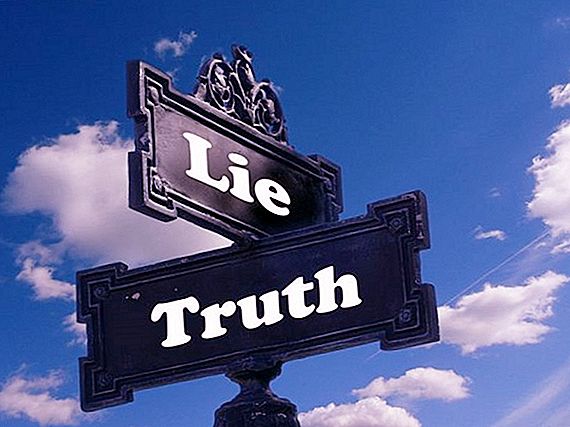All people regularly deceive each other. This is due to the characteristics of the human psyche, as well as to various social conditions. So, there are many different ways to understand if your interlocutor is lying or not.

All people lie, we can consider this statement a scientifically proven fact. Unfortunately this is so, but knowing this trivial fact, we can learn to use it for the benefit of ourselves and society. Someone is lying in order to hide certain information purposefully, someone is deceiving because he can not tell the truth because of fear. In many respects, this is due to our upbringing, habits and the social environment in which we are at a particular moment in time.
Modern practical psychology has developed a number of general methods for identifying the interlocutor's lies. The most famous authors in this direction of practical psychology can be considered Allan and Barbara Pease (their book "The Bible of the Body Language), Desmond Morris, Dr. Kurpatov.

In order to identify whether a person is lying to you or not, you should turn to universal human arechity types of behavior. Remember yourself when you were a child and other children around you at that time. It is most difficult for children to deceive, because they have the lowest life experience, they are more kind and “unspoiled”. When young children lie, they, in most cases, have very similar reflexes. Children subconsciously do not want to hear the lies they say, so they unconsciously want to close either their eyes (so as not to see the person to whom they are lying), or their mouth (actually, not telling lies), or their ears (which is regarded as "I do not want to hear my own lies) These same gestures are valid for adults, formed personalities, however, in the process of their socialization, these gestures are "contrived" and become more invisible, for example:
- An unconscious desire to close your eyes flows into their scratching. Adult people seem to be mechanically drawn to close them, but halfway slightly change the gesture so that it does not seem so obvious.
- The children's desire to close their ears, according to the same logic, is modified in scratching earlobes in adults.
- The gesture of "closing your mouth" is modified even more. As a rule, in adults it looks like scratching the nose, it is worth noting that often scratching the nose occurs with the middle or index finger, scratching the chin or other frontal part of the face (eyebrows, forehead, cheeks). It should be said that it is on this form of gesture that special attention should be paid, because it is found more often than others. Moreover, in most cases, when a person tells a lie, the nose itself starts to itch involuntarily. The gesture "scratching your nose" during the conversation not only literally closes your mouth and creates additional face protection.

